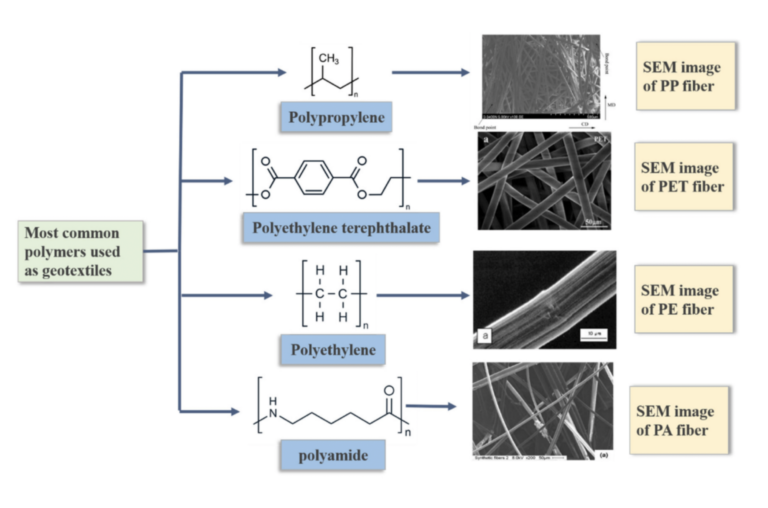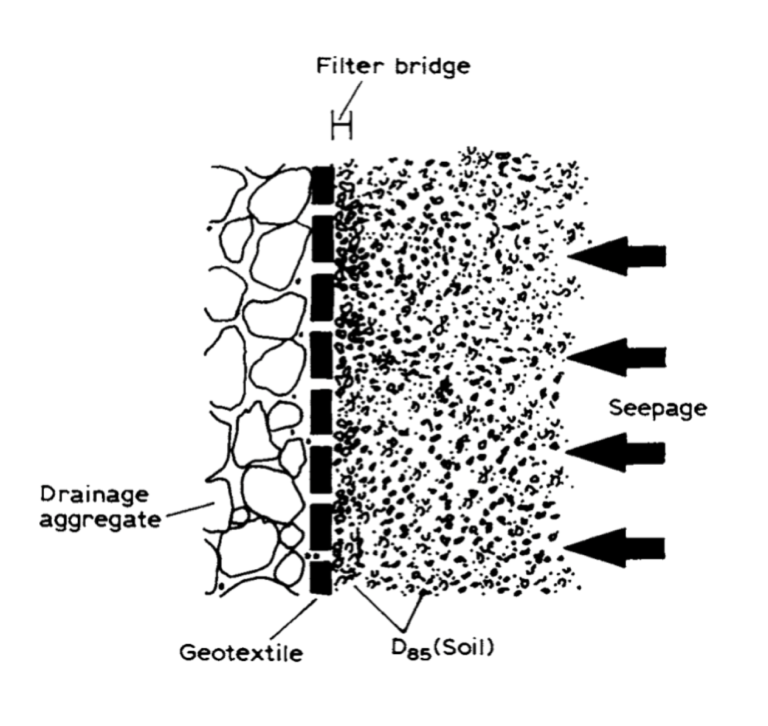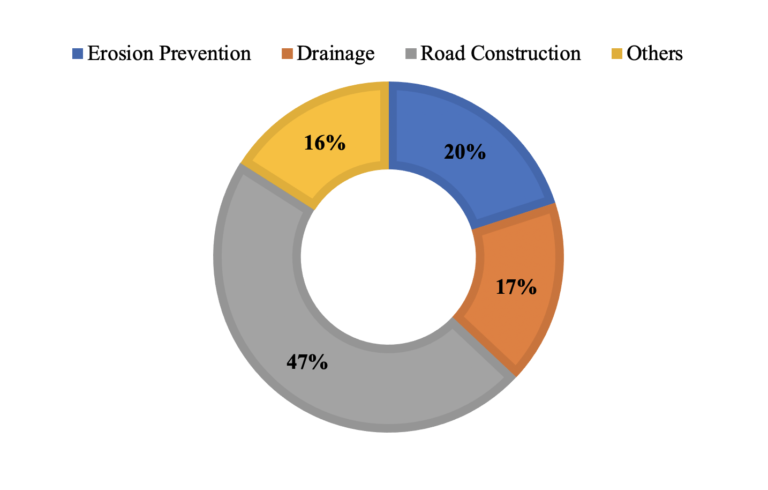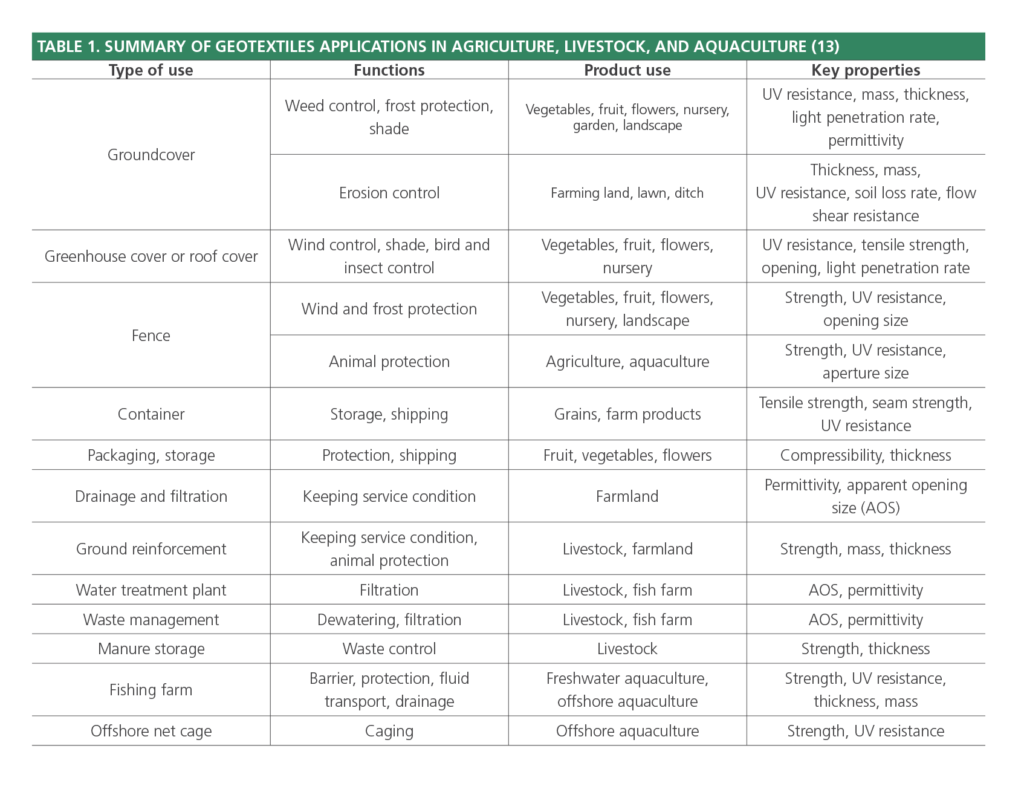Geotextiles are fabrics made with engineering plastics widely used in applications such as agriculture and aquaculture (1, 2). They can reinforce soil and protect crops from erosion, pests, and extreme weather conditions thanks to their filtering and separation capability that improves drainage and promotes plant growth (3, 4). Geotextiles can also be used in aquaculture applications as part of the artificial habitats for fish, shellfish, and other aquatic animals. They serve as filters to purify water and as a mitigation solution to reduce the risk of disease and enhance the overall health of the marine ecosystem (5, 6).
There are many advantages to using geotextiles in agriculture and aquaculture, given their durability, long service life, UV resistance, and customizability, making them an ideal choice for outdoor applications (7, 8, 9, 10). They are also easy to install and maintain, requiring minimal labor and equipment. This article explores the applications of geotextiles in agriculture and aquaculture, exploring their utility and benefits.
Geotextiles in brief

Geotextiles are polymer-based fabrics widely used as separation, filtration, reinforcement, protection, and drainage solutions in many civil engineering projects, including road construction, drainage systems, soil stabilization, and erosion control (11, 12). See Figures 1–3 for an overview of geotextile composition and typical applications.
Additionally, geotextiles have many uses in agriculture, livestock, and aquaculture, including as drainage systems, weed barriers, flooring for barns and stables, liners for manure pits and tanks, supports for oyster and mussel beds, and barriers to keep soil in place and prevent unwanted plant growth (2, 13). A summary of various geotextile applications in agriculture, livestock, and aquaculture can be seen in Table 1.
Typically, a geotextile is expected to provide sufficient strength and durability to withstand external attacks when designed for long-term projects (9). A study on the geotextiles’ performance highlighted that those made of polypropylene or polyester lose only 10 to 20% of the initial strength in the first 3–5 years due to the natural aging of the polymers in complex natural climatic conditions (8). Another benefit of geotextiles is their customizability to meet specific project requirements, given their physical and mechanical properties, easy installation, and low maintenance.
Uses of geotextiles in agriculture
Geotextiles can be used in various ways to reinforce soil and limit erosion. This material generally functions as a separator between the soil and the aggregate, enabling water to travel through while keeping the soil from mixing with the aggregate to increase slope stability and prevent erosion (14, 15). They can be placed on the soil’s surface to slow water flow and also help prevent erosion (16, 17). They can also be utilized in building channels or swales, which enable redirecting and managing the water flow, lowering the risk of erosion even further (18). Geotextiles are used in drainage systems to filter dirt and can be installed in drainage ditches or trenches to filter out silt, allowing the drainage system to remain clear and functional (19).

Other uses of geotextiles include preventing weeds from growing in mulch, rock beds, gardens or fields (20). They can also be used in pest control efforts as wrapping for tree trunks and the base of plants to prevent pests like rodents, rabbits, and deer from gnawing on the bark or eating the plants (13). The weather protection of crops is another point where geotextiles are applied as an effective solution in extreme weather conditions (21).
For example, geotextiles can produce greenhouse covers, which help manage the temperature and humidity while protecting crops from wind, rain, and other extreme weather conditions (13). Another example is using geotextiles to create a shade cloth or canopy. This is especially useful in protecting crops sensitive to sunlight, such as fruits and vegetables, from sunburn and heat stress. Geotextiles can also be used to protect crops from frost and freezing weather. Moreover, they can cover the soil around the base of a crop, helping retain heat in the soil and preventing the roots from freezing. In addition, geotextiles can be utilized as a windbreak to protect crops like fruit trees and tall plants from wind damage.
Uses of geotextiles in aquaculture
Geotextiles find many uses in both land- and sea-based aquaculture. First, they can help store and dewater solid wastes. Additionally, physical barriers made with geotextiles between different materials, species, or groups of fish help prevent and control diseases (13, 22). By separating sick or diseased fish, aquaculture handlers can quarantine and treat infected stock without spreading the infection to the rest of the population. Finally, geotextiles help produce a cleaner and healthier environment for the fish, preventing disease by trapping and removing pollutants, sediment, and other debris (23, 24).
Some geotextiles can also serve as a substrate for probiotic bacteria to grow and colonize (25). These bacteria help prevent and control fish diseases through competition with pathogenic microorganisms, producing antimicrobial compounds, and stimulating the fish’s immune system. Additionally, geotextile barriers can influence behavior and reduce aggressive interactions and density-related stress among fish (5). This is significant because fish farms are frequently overcrowded, increasing disease transmission risk. Accordingly, geotextiles are important for farmers and consumers because they ensure healthier, sustainable fish.
Conclusion: Geotextiles in agriculture and aquaculture
Geotextiles are versatile and helpful materials with a wide range of applications in civil engineering and environmental projects. They are made of various polymers, such as polypropylene and polyester, and can be woven or nonwoven. To summarize:
Geotextiles can provide suitable strength performance at high customizability and ease of installation, making them ideal for various agriculture and aquaculture applications.

Geotextiles can be utilized in agriculture to control pests and weeds, as a barrier to prevent weeds from growing through the soil and into gardens or fields, alongside mulch to suppress weeds, retain moisture, and add organic matter to the soil, and as reinforcement to improve slope stability, making the fields more productive and yielding more crops.
Geotextiles are typically used in aquaculture as the pond and tank liners, support of oysters and mussel beds, disease prevention and control measures, and water filtration and purification techniques.
AGRUTEX is a nonwoven polypropylene geotextile fabric that is easy to install and has a proven track record of high performance. This geotextile draws much of its strength from needle-punched staple fibers that form a stable network for high relational dimensional stability. AGRU’s geotextile manufacturing facility in Andrews, S.C. is designed to output a diversified range of AGRUTEX products engineered to meet the specific requirements of applications ranging from agriculture and aquaculture to waste containment and civil engineering applications. Information courtesy of AGRU America.

References
(1) S. K. Shukla. “Geosynthetics and ground engineering: sustainability considerations.” International Journal of Geosynthetics and Ground Engineering. (2021).
(2) N. Touze. “Healing the world: a geosynthetics solution.” Geosynthetics International. (2021).
(3) B. J. Agrawal. “Geotextile: It’s application to civil engineering–overview.” National Conference on Recent Trends in Engineering & Technology. (2011).
(4) G. R. Bhamare et al. “Stabilization of Soil Using Geotextile”.
(5) J. Wilson and S. Hopkins. “Geotextile artificial habitats in aquaculture.” Geotechnical fabrics report. (2001).
(6) M. Heibaum. “Geosynthetics for waterways and flood protection structures–controlling the interaction of water and soil.” Geotextiles and Geomembranes. (2014).
(7) T. S. Ingold and K. S. Miller. “Geotextiles handbook.” (1988).
(8) A. Rawal et al. “Geotextiles: Production. properties and performance.” Textile Progress. (2010).
(9) A. Rawal et al. “Geotextiles in civil engineering.” Handbook of technical textiles. (2016).
(10) K. S. Henry. “Geotextiles to mitigate frost effects in soils: A critical review.” Transportation Research Record. (1996).
(11) B. R. Christopher and G. R. Fischer. “Geotextile filtration principles. practices and problems.” Geosynthetics in Filtration. Drainage and Erosion Control. (1992).
(12) N. Dixon et al. “Sustainability aspects of using geotextiles.” Geotextiles. (2016).
(13) C. W. Hsieh. “Geotextiles in agriculture and aquaculture.” Geotextiles. (2016).
(14) A. Mwasha. “sing environmentally friendly geotextiles for soil reinforcement: A parametric study.” Materials & Design. (2009).
(15) D. N. Humphrey. “Tire derived aggregate as lightweight fill for embankments and retaining walls.” Proceedings International Workshop on Scrap Tire Derived Geomaterials. (2007).
(16) R. J. Rickson. “Controlling sediment at source: an evaluation of erosion control geotextiles.” Processes and Landforms: The Journal of the British Geomorphological Research Group. (2006).
(17) J. P. Guyer and R. PE. “An Introduction to Geotextiles in Erosion Control for Professional Engineers.” Guyer Partners. (2022).
(18) H. Wu et al. “Review of application and innovation of geotextiles in geotechnical engineering.” Materials. (2020).
(19) J. B. Whitman et al. “Improvements in small-scale standardized testing of geotextiles used in silt fence applications.” Geotextiles and Geomembranes. (2019).
(20) J. C. Neal. “Plan Before You Plant: A Five-Step Process for Developing a Landscape Weed Management Plan.” Handbook of Integrated Pest Management for Turf and Ornamentals. (2020).
(21) A. Restrepo-Osorio et al. “Agrotextiles and crop protection textiles.” High performance technical textiles. (2019).
(22) M. F. Schwartz et al. “Geotextile tubes for aquaculture waste management.” Proceedings. 5th Int’l Conf. Recirculating Aquaculture. Roanoke. (2004).
(23) P. Saengrungruang and C. E. Boyd. “Evaluation of porous. geotextile liners for erosion control in small aquaculture ponds.” North American Journal of Aquaculture. (2014).
(24) M. J. Sharrer and S. Summerfelt. “Evaluation of geotextile filtration applying coagulant and flocculant amendments for aquaculture biosolids dewatering and phosphorus removal.” Aquacultural Engineering. (2009).
(25) A. Estim. R et al. “Decarbonizing Aquatic Food Production Through Circular Bioeconomy of Aquaponic Systems.” Aquaculture Studies. (2022).
(26) B. R. Christopher and R. D. Holtz. “Geotextile construction and design guidelines.” In HI-89-050. Federal Highway Administration Washington. DC. (1989).
(27) B. Kermani et al. “Evaluation of effectiveness of geotextile in reducing subgrade migration.” Geosynthetics International. (2020).
(28) N. Xingxin et al. “Research on evolution of collaboration mechanism of stakeholders in.” RAIRO – Operations Research. (2020).
 TEXTILES.ORG
TEXTILES.ORG


